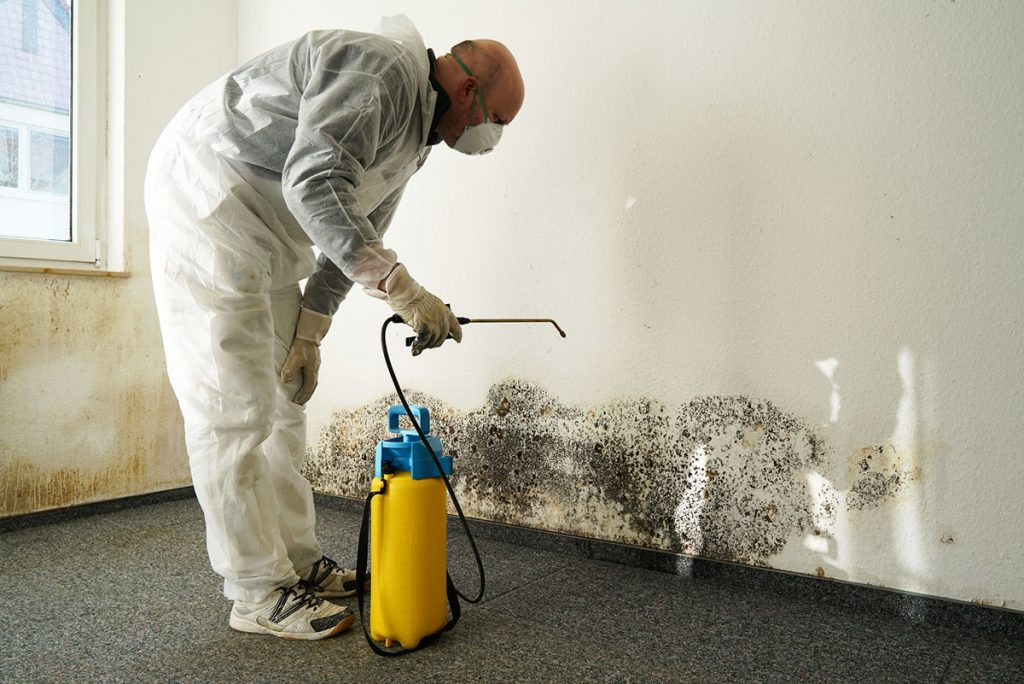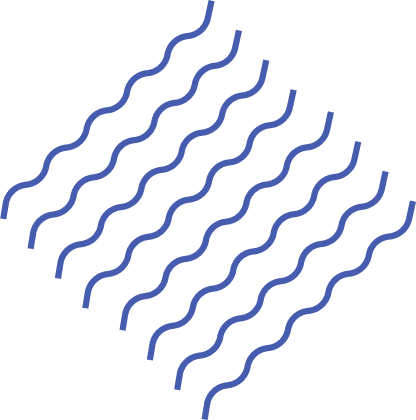Mold Removal Valley Stream


Indoor mold growth is a serious problem and can infect various parts of your home from drywall to bathtub grout. Mold growth begins in damp areas, especially sites of recurring water damage, and develops over time.
Mold infestations cause property damage and potentially even negative health issues, releasing allergens into the air and reducing your home’s indoor air quality. People who spend a lot of time in buildings with mold infestations are more prone to allergic reactions due to irritants and airborne spores from different types of mold.
The early signs of a mold problem are easy to miss, and can include a musty odor or mold stains. Homeowners with mild to moderate mold issues may feel comfortable doing mold cleanup themselves. For extensive cases of mold damage, get the help of a professional with the right equipment and safety know-how.
DIY Mold Removal
It is possible to get rid of mold yourself. DIY mold treatments typically involve household supplies, like cleaning products, which can effectively treat moldy areas.
DIY remediation processes usually cost less than professional interventions. In some cases, doing it yourself might be less work, as homeowners won’t need to spend the time and effort to find a mold remediation company to retain their services.
Here are some considerations when deciding whether you should remove mold yourself or hire a professional:
Square footage: The EPA recommends homeowners perform DIY mold removal in cases where mold covers less than 10 square feet. For mold damage cases that are more extensive, a professional can help to contain the area and remove the mold permanently.
Health and safety: Tampering with mold growth without the proper disposal solutions can inadvertently cause mold spores to disperse and potentially form new colonies throughout the home. For family members who have already suffered health effects from mold exposure, this can increase their risk of ongoing complications.
Recurring mold growth: If you’ve already removed the mold and it has grown back, the case becomes more complex, and you might need the help of professionals. Your home could have a ventilation issue that requires indoor climate control solutions.
Professionals can help get to the bottom of the problem and correct any indoor moisture concerns.
Before you try to remove mold yourself, you’ll need the right protective equipment as well as a solution for properly sealing off the affected area and disposing of the mold safely.
Get the Right Protective Equipment
Always ensure you protect yourself against potentially harmful types of mold, like Stachybotrys, also known as the black mold.
Standard personal protective equipment (PPE) you’ll need when removing mold includes:
- Rubber or disposable latex gloves
- Googles, safety glasses, or a face shield
- Face masks
- Washable or disposable clothing
According to the Environmental Protection Agency (EPA), the most important aspect of protecting yourself against mold exposure is to have the right mask. The EPA recommends the N95 respirator mask because it has the correct level of filtration for particulates like mold and bacteria.
Not only does a face mask protect you from accidentally inhaling microscopic mold spores, but it can also protect you from the fumes of strong cleaning products.
Prepare the Affected Area
Mold spores can become airborne, and travel to other areas of the home, so proper precautions are essential. Mold cleanup should take place when no one is home, including pets and children, to limit potentially inhaling spores.
Here are some other tips to help minimize contamination:
- Remove nearby furniture and valuables from the room, especially things with porous surfaces like fabric
- Place disposable drop cloths or plastic sheeting around the area to capture stray spores
- Address all sources of water damage in the area so that the moisture problem doesn’t persist after cleaning
- After properly sealing off the affected area, you can safely begin cleaning and removing the mold.
Apply Disinfectant
Mold is a living organism, so cleanup attempts need to be focused on killing mold to prevent it from reproducing. Disinfectants, like bleach or biocides, can be effective if applied for long enough.
The most common mold removal products are:
Bleach: While toxic to mold, bleach can only be used while diluted and on non-porous surfaces like wood or tile, and it can’t penetrate areas deeply. Bleach should be left on for a minimum of 15 minutes to kill the mold.
Borax: Safe to use in a solution, Borax prevents more growth and does not need to be rinsed off.
Vinegar: Spray vinegar onto a moldy surface and leave it for an hour before wiping down (repeat this process to continue preventing further mold growth)
Ammonia: Similar to bleach, ammonia can only be used on non-porous surfaces, but it will kill mold, which can be wiped away afterward.
Hydrogen peroxide: Hydrogen peroxide involves a similar process to vinegar—it can be sprayed and left on a surface for some time before being scrubbed off.
Baking soda: Similar to vinegar and peroxide, apply baking soda onto a moldy surface, leave it for an hour and then scrub it away with a cloth.
Detergent: Use detergent to scrub and clean a surface after the application of mold-killing agents. Apply cleaning products in a wide area, especially around the perimeters. Since mold spores are microscopic, you want to ensure you don’t miss any nearby that are invisible.
For safety reasons, only use one product at a time. Beware never to mix any of these products without researching them, otherwise, you can unintentionally create a poisonous gas. For example, never mix ammonia and bleach.
It’s also possible you have mildew rather than mold. Mildew sits on the surface of the affected area, while mold penetrates more deeply. This makes mildew easier to wipe away with any of the above products.
Remove and Dispose of Mold
After applying disinfectant, the final step is to remove the mold completely from the surface and clean the affected area thoroughly.
To clean the area, use a heavy-duty cleaner appropriate for the surface, like a tile cleaner in a bathroom. When wiping the surface, use disposable materials, such as shop towels or old rags. Place moldy cleaning materials into a sealable bag.
Typically, there are no regulations for the disposal of moldy items, but there are methods of safer disposal. All mold-contaminated items should be taken directly outside into a dumpster or garbage, and never left in an indoor trash can.
The items should also spend as little time as possible in the home—take them outside as quickly and directly as possible, even if that means tossing them out of a ground-level window. Make sure not to leave mold-contaminated items around others and avoid spilling or getting any of the materials anywhere else.
Finally, collect all mold-covered items that cannot be restored, like furniture, rugs, or siding, and dispose of them directly.
Mold Removal Costs
Mold removal can have a wide range of costs depending on how extensive the damage is, the type of mold, and the types of surface materials infested.
The cost also depends on whether you’re removing mold yourself or hiring a professional.
DIY Mold Removal Costs
DIY is the most affordable option. Your investment will consist of the cost of your materials, like personal protective equipment, cleaners, and other supplies.
DIY will also cost you your time. For people with busy schedules, their time is the biggest expense of all. Other incidental costs include any items you need to replace or surface areas you need to restore such as paint or grout.
Professional Mold Removal Cost
Mold removal professionals can cost much more, sometimes up to thousands of dollars when all factors are considered.
A 2018 survey of disaster restoration professionals collected data regarding average industry costs. The researchers found that professionals charge $108 per hour for mold removal.
For more in-depth areas, where insulation and drywall may be affected, repair costs also become a factor. These costs are very situational, and getting a quote is important to determine how much mold damage restoration will cost in your situation.
Some forms of insurance will cover the damage, especially if the mold is caused by flood water damage, storm damage or other natural disasters. Always check your individual policy.
Get Help From Mold Removal Services
Overall, mold removal can seem like a daunting process. If you find an area of less than 10 square feet of mold, you can take care of it yourself at home. With the proper protective equipment, you can use household cleaning products to remove and clean up mold, while disposing of it safely.
For larger areas, it could be necessary to call a professional. The best mold removal companies use specialized equipment, like HEPA vacuums and high-powered dehumidifiers that can make large-scale removal possible. In complicated cases, like mold inside HVAC systems or air ducts, a professional will ensure that all mold is safely removed and prevent future outbreaks.
Professionals will also tailor their mold cleanup process, depending on whether porous materials or wood surfaces are affected.
Professional services can be expensive, so it’s important to call early before mold has a chance to spread more. With these tips on DIY mold removal and advice on professional mold removal services, you’re ready to tackle mold problems head-on.
Professional Mold Testing
Typically, professional mold testing is only required if a moldy smell is present but no mold is visible. This is because the mold remediation process for all types of mold is essentially the same, according to the American Industrial Hygiene Association (AIHA) and the Environmental Protection Agency (EPA).
The main reason to hire a professional mold testing service is if a family member is experiencing respiratory or allergy issues not due to the typical allergen sources, such as seasonal or pet allergies.
While DIY mold testing kits are convenient and affordable, they’re not as accurate as professional mold testing and inspection services. Mold testing companies know exactly what to look for, including the most common indicators that mold is present. They will be able to identify species of mold and know which techniques and products will remove it quickly and effectively.
Hiring a professional mold inspection service is especially important when buying an older home, as most older homes have some mold present, especially in the bathrooms. Identifying the presence of mold can not only ensure the house is mold-free when you move in, but can also be used to negotiate a lower price for the home.
Professional mold testing and home inspection services will typically cost between $200-$1000. The most difficult part of mold detection isn’t determining if there is mold but determining the extent of the growth.
Once the mold is discovered, either in the air or on a material’s surface, the surrounding area must be inspected thoroughly. Homeowners can expect to pay more for a mold inspection service, should they have to search a large, inaccessible area.
We’d love to provide you the best Mold services in Valley Stream
“Great service, fast and clean. Very professional. Highly recommended. Did the job very fast great price”

They Trusted Me
I'm proud to know that clients are satisfied with my service
Even after the work was done, we’ve been able to cultivate a working relationship where I don’t hesitate to reach out and have them take care of a project that may present itself. This was very much evident after Storm Ida, when my basement flooded and Nik made himself available to help us out during the insurance claim process and organizing the work to restore our basement.
They were easy to work with, did a great job and — gasp — are easy to get ahold of! Nik is so great to work with. If you deal with contractors enough you know that finding a good one can be tricky and so we and our condo management company are so glad to have found Nik and the crew at PDR. They are the real deal.
Helped me through my tragic loss. The project manager helped us every step of the way. Very fast. Knowledgeable and very efficient. I definitely recommend them to anyone with a fire or water loss




